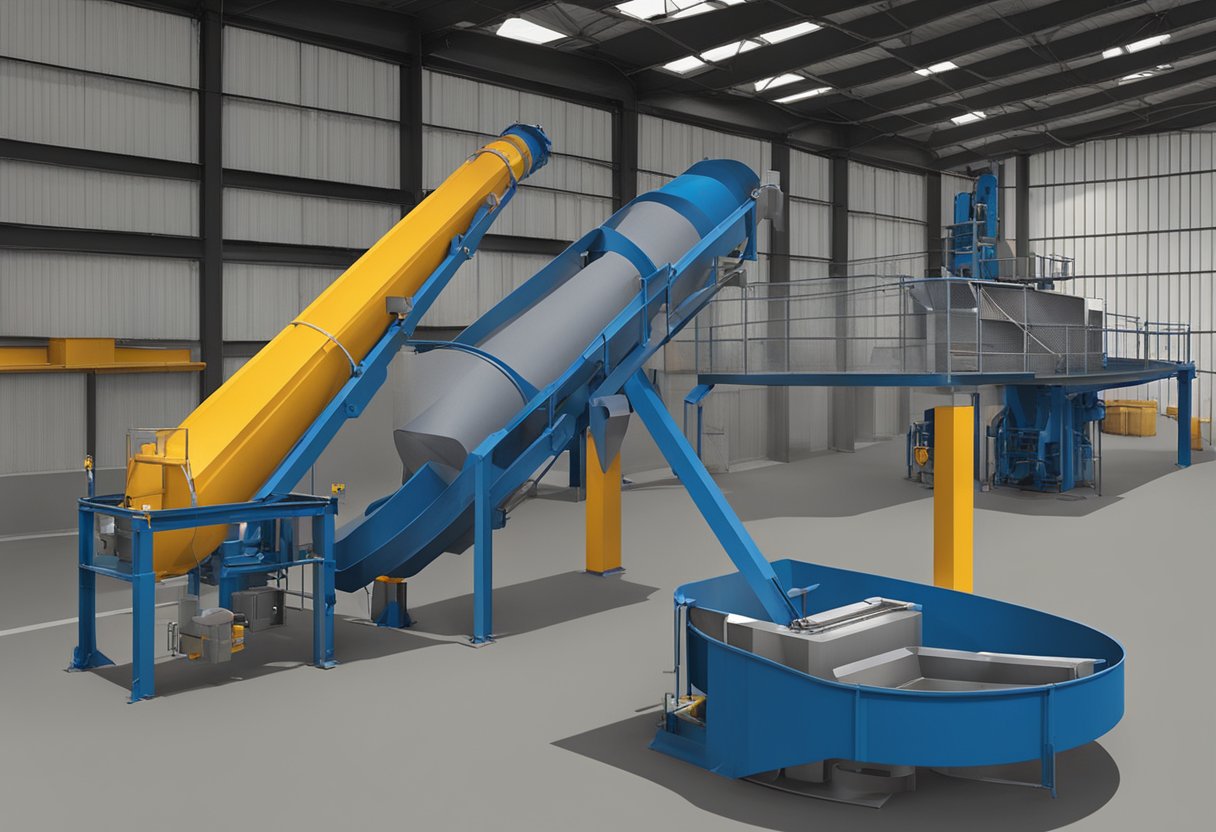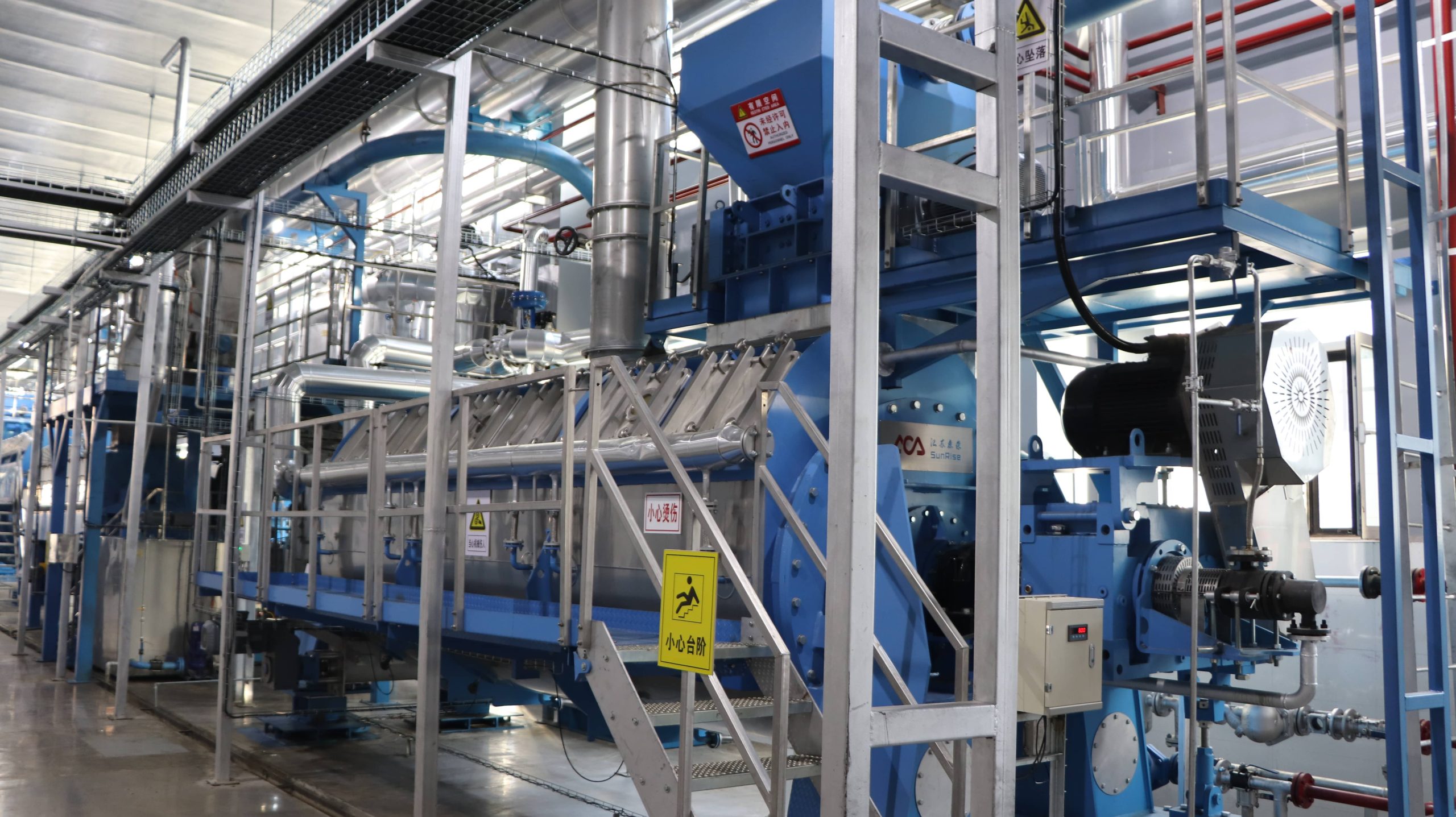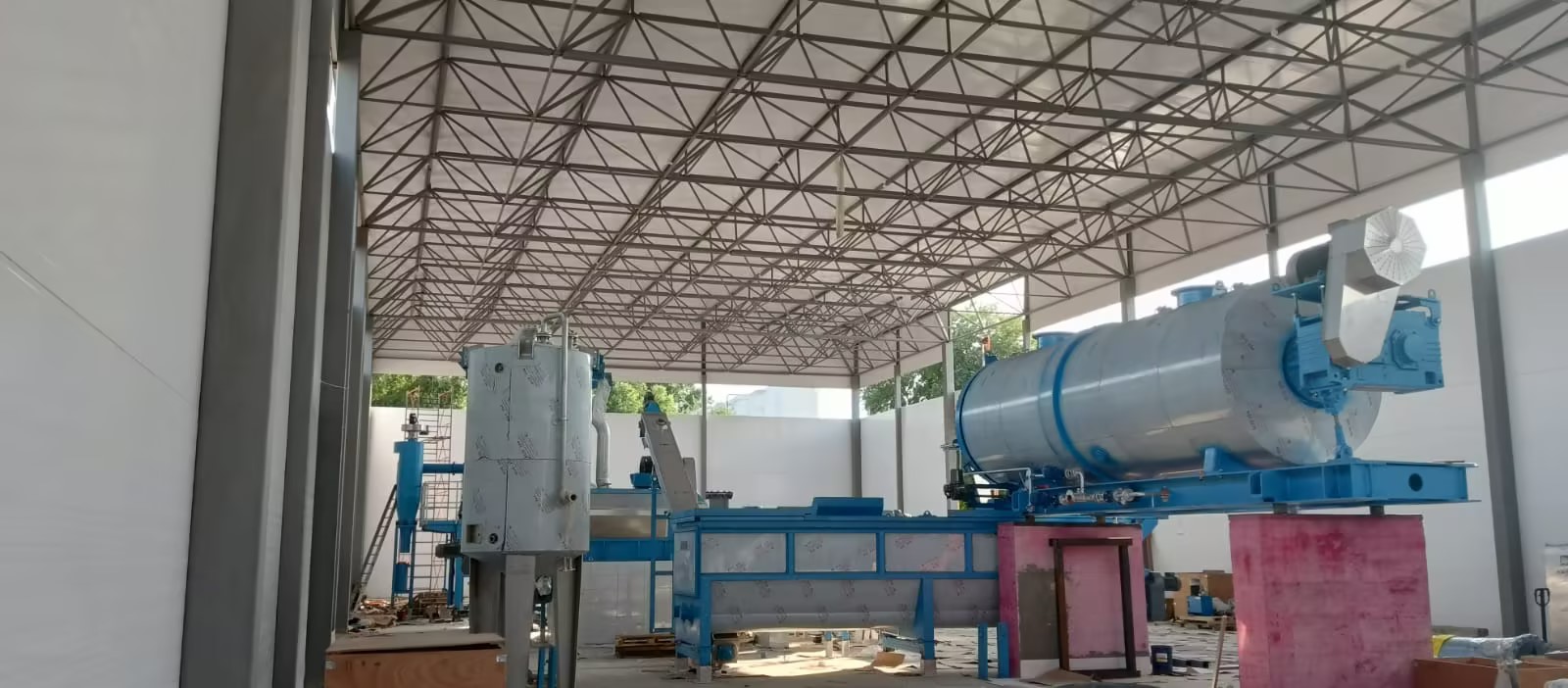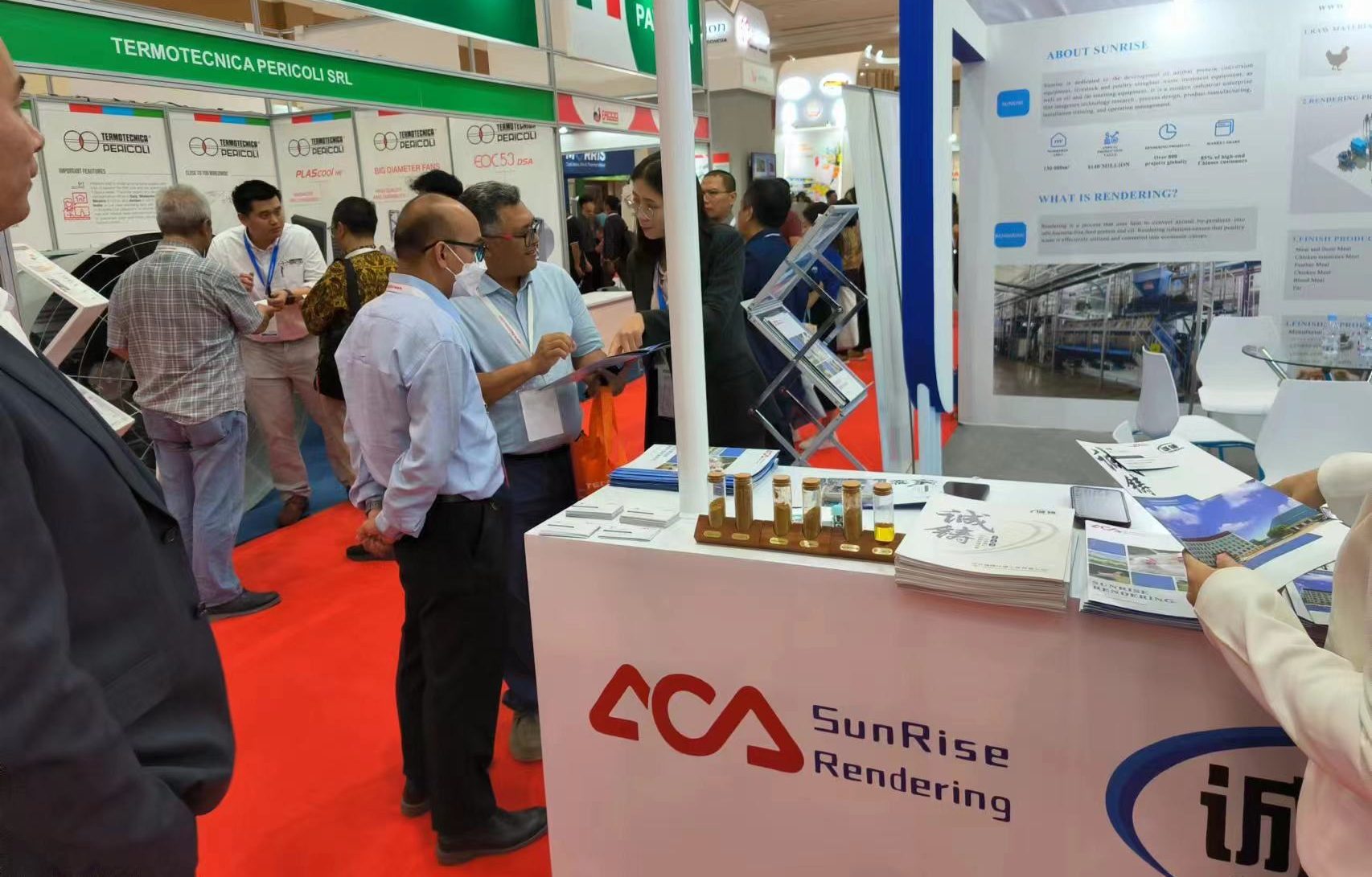
Screw Auger Conveyor for Sale: Efficient and Affordable Material Handling Solution
Screw Auger Conveyor for Sale: Efficient and Affordable Material Handling Solution
Screw Auger Conveyor for Sale are an essential component of many industries, including agriculture, food processing, and manufacturing. These conveyors are used to move materials horizontally or at an incline, and they can handle a variety of materials, including powders, grains, and pellets. Screw auger conveyors are ideal for transporting materials that are difficult to handle with other types of conveyors, such as sticky or abrasive materials.

If you are in the market for a screw auger conveyor, there are many options available. You can find screw auger conveyors for sale in a variety of sizes and configurations, including horizontal, vertical, and inclined models. Some screw auger conveyors are designed for specific applications, such as food processing or chemical manufacturing, while others are more versatile and can handle a variety of materials.
When choosing a screw conveyor, it is important to consider your specific needs and requirements. Factors such as the type of material you need to transport, the distance the material needs to travel, and the speed at which you need to move the material will all play a role in determining the best conveyor for your needs. With so many options available, it is important to do your research and choose a reputable supplier who can help you find the right conveyor for your business.
Types of Screw Auger Conveyors

Screw auger conveyors are used in a wide range of industries for moving materials from one place to another. They come in different types, each with unique features that make them suitable for specific applications. Here are some of the common types of screw auger conveyors:
Flexible Screw Conveyors
Flexible screw conveyors are also known as helix conveyors or spiral conveyors. They are designed to transport materials that are free-flowing and non-abrasive. The conveyor consists of a flexible screw that rotates within a flexible tube. As the screw rotates, it moves the material along the tube to the discharge point.
Flexible screw conveyors are popular in the food and pharmaceutical industries because they are easy to clean and sanitize. They are also used in the chemical and plastics industries for conveying powders and granules.
Shaftless Screw Conveyors
Shaftless screw conveyors are designed to transport materials that are sticky, stringy, or difficult to convey with traditional shafted screw conveyors. They have a unique design that eliminates the need for a central shaft, making them ideal for handling materials that tend to wrap around the shaft.
Shaftless screw conveyors are commonly used in wastewater treatment plants for conveying sludge and other materials. They are also used in the pulp and paper industry for conveying wood chips and other fibrous materials.
Inclined Screw Conveyors
Inclined screw conveyors are used for conveying materials at an incline or vertically. They are designed with a screw that rotates at a specific angle to move the material up or down. Inclined screw conveyors are commonly used in the agricultural industry for conveying grain and other materials.
Inclined screw conveyors are also used in the mining and construction industries for conveying materials from one level to another. They are designed to handle heavy loads and can be customized to meet specific requirements.
In conclusion, screw auger conveyors come in different types, each with unique features that make them suitable for specific applications. Whether you need to convey free-flowing materials, sticky materials, or materials at an incline, there is a screw auger conveyor that can meet your needs.
Key Features and Specifications

Material and Build Quality
The screw auger conveyor for sale is made of high-quality stainless steel, ensuring durability and resistance to corrosion. The conveyor’s trough and screw are designed to withstand heavy loads and harsh working environments, making it suitable for a wide range of applications.
Size and Capacity
The screw auger conveyor is available in various sizes and capacities to meet the specific needs of different industries. The conveyor’s capacity is determined by its diameter, pitch, and speed. The larger the diameter, the higher the capacity of the conveyor. The pitch and speed of the screw also affect the conveyor’s capacity.
Motor and Power Requirements
The screw auger conveyor is equipped with a high-quality motor that provides reliable and efficient operation. The motor’s power requirements depend on the conveyor’s size and capacity. The conveyor’s motor is designed to provide sufficient power to move materials at a consistent speed, ensuring smooth and efficient operation.
Overall, the screw auger conveyor for sale is a reliable and efficient solution for conveying materials in various industries. Its high-quality construction, customizable size and capacity, and efficient motor make it a valuable addition to any production line.
Benefits of Using Screw Auger Conveyors

Screw auger conveyors are an essential component of many industrial processes, providing a reliable and cost-effective method for moving materials from one location to another. These conveyors are widely used in a variety of industries, including agriculture, food processing, and manufacturing. Here are some of the benefits of using screw auger conveyors:
Efficiency and Productivity
Screw auger conveyors are designed to move materials quickly and efficiently, which can help to increase productivity and reduce downtime. These conveyors are capable of handling a wide range of materials, from powders and granules to larger items such as grains and seeds. They can also be customized to meet the specific needs of each application, making them a versatile solution for a variety of industries.
Versatility and Flexibility
One of the key benefits of screw auger conveyors is their versatility and flexibility. These conveyors can be used for a wide range of applications, including horizontal, inclined, and vertical conveying. They can also be designed to fit into tight spaces, making them ideal for use in areas where space is at a premium. Additionally, screw auger conveyors can be customized to handle materials with specific characteristics, such as high moisture content or abrasive properties.
Low Maintenance Requirements
Screw auger conveyors are designed to be low maintenance, which can help to reduce operating costs and downtime. These conveyors are typically made from durable materials such as stainless steel, which can withstand harsh operating conditions and resist corrosion. Additionally, screw auger conveyors are designed with few moving parts, which can help to reduce wear and tear and minimize the need for repairs.
In summary, screw auger conveyors offer a reliable and cost-effective method for moving materials in a variety of industrial applications. Their efficiency, versatility, and low maintenance requirements make them an ideal solution for a wide range of industries, from food processing to agriculture and manufacturing.
Applications and Industries Served
Screw auger conveyors are versatile machines that can be used in a wide range of industries. They are particularly well-suited for handling materials that are dry, free-flowing, and have a consistent particle size. Here are some of the industries that screw auger conveyors are commonly used in:
Agriculture and Farming
Screw auger conveyors are used extensively in the agriculture and farming industry. They are used to transport a variety of materials such as grain, seeds, and animal feed. The conveyors are often used in combination with other machines such as grain elevators and silos to efficiently move materials from one location to another.
Food Processing
Screw auger conveyors are also used extensively in the food processing industry. They are used to move materials such as flour, sugar, and spices from one part of the processing plant to another. The conveyors are designed to meet strict hygiene standards and can be easily cleaned to prevent contamination.
Pharmaceuticals
The pharmaceutical industry also makes use of screw auger conveyors. They are used to transport materials such as powders, tablets, and capsules. The conveyors are designed to meet the strict hygiene standards of the industry and can be easily cleaned to prevent contamination.
Construction and Mining
Screw auger conveyors are also used in the construction and mining industries. They are used to transport materials such as sand, gravel, and other construction materials. The conveyors are designed to be durable and reliable, even in harsh environments.
In summary, screw auger conveyors are versatile machines that can be used in a wide range of industries. They are particularly well-suited for handling dry, free-flowing materials and have a consistent particle size. Whether you are in the agriculture and farming, food processing, pharmaceuticals, or construction and mining industry, a screw auger conveyor may be the right solution for your material handling needs.
Installation and Setup
Space Considerations
When considering the installation of a screw auger conveyor, it is important to take into account the space available in your facility. These conveyors come in various sizes and configurations, so it is crucial to choose one that fits your specific needs.
Before installation, it is important to measure the available space and ensure that the conveyor will fit properly. It is also important to consider the height of the conveyor and ensure that it will not interfere with other equipment or structures in the facility.
Integration with Existing Systems
When setting up a screw auger conveyor, it is important to consider how it will integrate with existing systems. This includes connecting it to other equipment, such as hoppers or silos, and ensuring that it is properly aligned with the rest of the production line.
It is also important to ensure that the conveyor is compatible with any control systems in place, such as programmable logic controllers (PLCs) or human-machine interfaces (HMIs). This will ensure that the conveyor can be easily controlled and monitored as part of the overall production process.
Overall, proper installation and setup of a screw auger conveyor is crucial for ensuring efficient and effective material handling in a manufacturing facility. By taking into account space considerations and integrating it with existing systems, manufacturers can maximize the benefits of this versatile and reliable conveyor system.
Operation and Control Mechanisms
Manual Operation
Screw auger conveyors can be operated manually through the use of a hand crank or lever. This method of operation is ideal for smaller systems or for situations where precise control is required. Manual operation allows for the operator to adjust the speed and direction of the conveyor as needed, making it a versatile option for a variety of applications.
Automated Control Systems
For larger systems or applications that require constant and precise control, automated control systems can be used. These systems can be programmed to adjust the speed and direction of the conveyor based on specific parameters, such as the amount of material being conveyed or the desired discharge rate.
Automated control systems can also include sensors and alarms to monitor the conveyor’s performance and alert operators to any issues that may arise. This allows for quick and efficient troubleshooting and maintenance, reducing downtime and increasing overall efficiency.
Overall, the operation and control mechanisms of screw auger conveyors are designed to provide operators with precise and efficient control over the conveyance of materials. Whether operated manually or through an automated control system, screw auger conveyors are a reliable and versatile option for a variety of applications.
Safety and Compliance Standards
OSHA Regulations
When it comes to screw auger conveyors, safety is a top priority. The Occupational Safety and Health Administration (OSHA) has set specific regulations for the use of these machines in the workplace. These regulations are designed to protect workers from injury and ensure that the equipment is used safely and effectively.
One of the key OSHA regulations for screw auger conveyors is the requirement for proper guarding. This includes guarding for the moving parts of the machine, as well as access points and pinch points. Proper guarding can help prevent accidents and injuries, and it is important to ensure that all guards are in place and functioning properly before using the conveyor.
Another important OSHA regulation for screw auger conveyors is the requirement for lockout/tagout procedures. These procedures are designed to ensure that the conveyor is shut down and de-energized before any maintenance or repair work is performed. This can help prevent accidental startups and other hazards.
CE Marking and Compliance
In addition to OSHA regulations, screw auger conveyors must also comply with CE marking requirements. CE marking is a certification mark that indicates that a product meets certain safety, health, and environmental protection standards for use within the European Economic Area (EEA).
To receive CE marking, screw auger conveyors must undergo a conformity assessment process, which includes a review of the design, testing, and documentation of the equipment. This ensures that the conveyor meets the necessary safety requirements for use within the EEA.
It is important to note that CE marking is not a requirement for screw auger conveyors used outside of the EEA. However, many companies choose to comply with CE marking standards as a way to demonstrate their commitment to safety and quality.
Overall, safety and compliance are critical considerations when purchasing a screw auger conveyor for sale. By understanding and adhering to OSHA regulations and CE marking requirements, companies can ensure that their equipment is safe, effective, and compliant with industry standards.
Maintenance and Troubleshooting
Routine Maintenance Schedule
Regular maintenance is crucial to ensure that screw auger conveyors operate at their optimal level and maintain longevity. A routine maintenance schedule should be established to avoid unexpected breakdowns and associated downtime. The following are some of the maintenance tasks that should be performed on a regular basis:
- Lubrication: Proper lubrication of the conveyor components is essential to reduce wear and tear and prevent corrosion. The frequency of lubrication depends on the type of conveyor and the operating conditions. A lubrication schedule should be established and followed strictly.
- Inspection: Regular inspection of the conveyor system should be performed to detect any signs of wear and tear, misalignment, or damage to the components. The inspection should include the drive unit, bearings, shafts, couplings, and other components.
- Cleaning: The conveyor should be cleaned regularly to prevent the accumulation of debris, dust, and other contaminants that can cause damage to the components and affect the performance of the conveyor.
Common Issues and Solutions
Despite proper maintenance, screw auger conveyors can experience issues that may affect their performance. The following are some of the most common issues and their solutions:
- Material buildup: Material buildup can occur in the conveyor system, causing blockages and affecting the performance of the conveyor. Regular cleaning and inspection can prevent material buildup. If material buildup occurs, it can be removed by using compressed air or by disassembling the conveyor and manually removing the buildup.
- Belt slippage: Belt slippage can occur due to improper tensioning of the belt or worn-out pulleys. The tension of the belt should be checked regularly, and worn-out pulleys should be replaced.
- Overheating: Overheating can occur due to excessive friction or lack of lubrication. The conveyor should be lubricated regularly, and the components should be inspected for signs of wear and tear.
Screw auger conveyor for sale regular maintenance and troubleshooting are essential for screw auger conveyors to operate at their optimal level and maintain longevity. By following a routine maintenance schedule and addressing common issues promptly, the conveyor system can provide reliable and efficient performance.
Cost Considerations
Initial Investment
When considering purchasing a screw auger conveyor, the initial investment cost is an important factor to consider. The cost of a screw auger conveyor can vary depending on the size, material, and features of the conveyor. For example, a larger conveyor made of stainless steel with additional features such as a variable speed drive will likely cost more than a smaller conveyor made of mild steel with basic features.
It is important to keep in mind that while a higher initial investment may seem daunting, a higher quality conveyor can lead to lower operating costs and less maintenance in the long run. It is recommended to do research and compare different options before making a purchase to ensure that the initial investment is worth it in the long term.
Operating Costs
In addition to the initial investment, operating costs should also be considered when purchasing a screw auger conveyor. Operating costs include expenses such as electricity, maintenance, and repairs.
Electricity costs can vary depending on the size and efficiency of the conveyor. It is important to choose a conveyor with a motor that is appropriately sized for the intended use to avoid unnecessary energy consumption.
Maintenance costs can also vary depending on the materials and features of the conveyor. A conveyor made of stainless steel may require less maintenance than a conveyor made of mild steel, as it is less susceptible to rust and corrosion. Additionally, certain features such as self-cleaning options can reduce the need for manual cleaning and maintenance.
Repairs may also be necessary over the lifetime of the conveyor. It is important to choose a conveyor with a warranty and to properly maintain the conveyor to minimize the need for repairs.
Overall, when considering the cost of a screw auger conveyor, it is important to take into account both the initial investment and the operating costs over the lifetime of the conveyor.
Purchasing Options
When it comes to purchasing a screw auger conveyor, there are a few options available to buyers. This section will cover the pros and cons of buying new vs. used equipment, as well as leasing and financing options.
New vs. Used Equipment
One of the first decisions buyers must make is whether to purchase new or used equipment. New equipment comes with the latest technology and design features, as well as warranties and support from the manufacturer. However, new equipment can also come with a higher price tag.
Used equipment, on the other hand, can be more affordable and readily available. Buyers can often find used equipment in good condition that has been well-maintained. However, there is a risk of hidden damage or wear and tear that may not be immediately apparent. Buyers should thoroughly inspect used equipment before making a purchase.
Leasing and Financing
Another option for buyers is to lease or finance their screw auger conveyor. Leasing allows buyers to use the equipment for a set period of time without committing to a full purchase. This can be a good option for buyers who need the equipment for a specific project or who want to try it out before committing to a purchase.
Financing allows buyers to spread out the cost of the equipment over time, making it more affordable. This can be a good option for buyers who need to conserve cash flow or who want to invest in other areas of their business. However, financing can also come with interest and fees, so buyers should carefully consider the total cost before making a decision.
Overall, there are several purchasing options available to buyers of screw auger conveyors. By weighing the pros and cons of each option and considering their specific needs and budget, buyers can make an informed decision that meets their requirements.
Vendor Selection and Support
When looking for a screw auger conveyor for sale, selecting the right vendor is crucial to ensure that you get the best product and support. Here are some factors to consider when selecting a vendor:
Supplier Reputation
It is important to choose a vendor with a good reputation in the industry. Look for vendors who have been in business for a long time and have a track record of providing quality products and services. Check online reviews and ratings to see what other customers have to say about the vendor.
After-Sales Support
After-sales support is crucial when it comes to screw auger conveyors. Look for vendors who offer comprehensive support services such as installation, training, and maintenance. It is important to choose a vendor who can provide timely and efficient support to minimize downtime and ensure that your conveyor is always running smoothly.
When selecting a vendor, it is also important to consider their pricing, delivery times, and payment terms. Make sure to compare multiple vendors to find the one that best meets your needs and budget.
In summary, screw auger conveyor for sale selecting the right vendor is crucial when looking for a screw auger conveyor for sale. Look for a vendor with a good reputation and comprehensive after-sales support to ensure that you get the best product and service.



